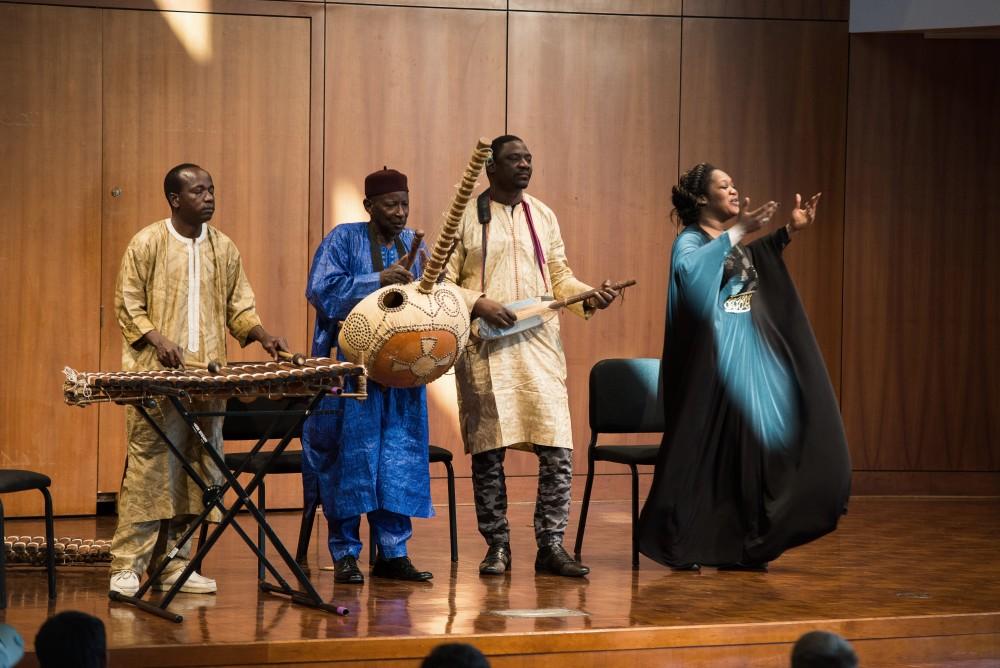Arts at Noon celebrates history in music

GVL/Luke Holmes ALhaji Papa Susso and his group members play West African style music in Cook Dewitt on Nov. 11.
Nov 16, 2015
The latest performers in Grand Valley State University’s “Arts at Noon” music and performance series brought over 800 years’ worth of history and sound to the audience.
On Nov. 11, the Cook-DeWitt Center hosted Alhaji Papa Susso, a West African griot. Acting as the historians and memory-keepers of their tribes, griots like Papa Susso use music to commemorate important traditions, events and customs.
Like many griots, Papa Susso’s instrument of choice is the kora, an African harp-lute with 21 strings. Papa Susso said the musical strength of the kora comes from audience reactions.
“It’s a very powerful instrument, and it’s very beautiful…because people love it,” he said. “Each time we perform, we let people dance. We want you to join with us to sing. We just want to make you feel happy.”
Papa Susso was accompanied on stage by his three-person musical ensemble. This included his son, Mousa Diabate playing the konting and Fatim Diabate, who sang and led audience members onto the stage to dance alongside her.
Among these audience members was Wesley Swartz, who said joining the performance was an exercise in letting loose.
“I had fun (getting pulled up on stage to dance),” Swartz said. “That’s the most important part, I had a lot of fun. I was a little nervous at first, but I just went with the music. I loved the music (and) I liked the culture. I think they shared their culture a lot.”
Jason Hanna, another student audience member, said the pairing of fun and culture made the experience worthwhile.
“It’s new to me,” he said. “I’ve never seen a West African concert. The instruments were really different than what I’m used to. There was a really good rhythm to it — just good vibes. You just learn by being exposed to other cultures.”
Balla Kouyate, the third member of Papa Susso’s ensemble, played the balafon. The balafon was invented 800 years ago, and it is similar to a xylophone. Kouyate said the cultural element is what he enjoys about performing for students like Swartz and Hanna.
“College students are an exciting crowd,” Kouyate said. “And the good thing about this is that they learn something. This isn’t something that you get to see very often here in the United States. When you mention Africa, you don’t get the positive side out of it most of the time. It’s a beautiful culture, even if they’re not understanding what we’re saying.”
Kouyate said his family owns a centuries-old balafon that is made from natural materials like bamboo and rosewood, a family heirloom that has been protected and passed down to him through several generations.
“We aren’t just playing the music; we’re the custodians of history,” Kouyate said. “This is the reason why we have this kind of music in our society: to keep reminding people who they are, where they came from, because we believe you can only know where you’re heading (once) you know where you came from.”
The next event in the Arts at Noon series is a holiday music performance for Brass Quintet on Dec. 2 at the Cook-DeWitt Center. A full calendar of events is online at www.gvsu.edu/artsatnoon.























